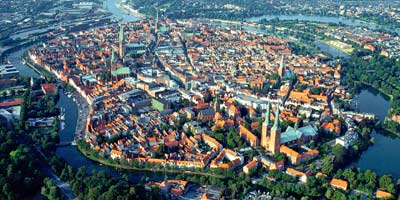American Indians in Twelfth-Century Germany?! #1: Hakluyt September 18, 2013
Author: Beach Combing | in : Medieval , trackback***Thanks to ANL who sent this one in***
In 1601 Richard Hakluyt translated, into English, António Galvão’s Tratado que compôs o nobre & notauel capitão Antonio Galuão, dos diuersos & desuayrados caminhos, por onde nos tempos passados a pimenta & especearia veyo da India às nossas partes, & assi de todos os descobrimentos antigos & modernos, que são feitos até a era de mil & quinhentos & cincoenta, a book that had originally been published in 1556 in Lisbon. Galvão was a learned Portuguese administrator, who spent much of his life in the Pacific and who had a gift for finding juicy bits of geographical information. This book does not appear to be online in an edited format but there is the original. Beach has failed to find the passage below, but if anyone else manages Beach will do all the typing…
In the yeere 1153, in the time of Fredericke Barbarossa,it is written that there came to Lubec, a citie of Germanie, one canoe with certaine Indians, like vnto a long barge; which seemed to haue come from the coast of Baccalaos, which standeth in the same latitude that Germanie doth. The Germaines greatly wondered to see such a barge, and such people, not knowing from whence they came, nor vnderstanding their speech, especially because there was then no knowledge of that countrey, as now there is: it may be credible that though the boate was small in respect of those huge seas, yet the winde and water might bring them thither: as we see in these our days that the Almadic, which is but a small boate, commeth notwithstanding from Quiloa, Mosambique, and Sofala, to the island of St. Helena, being a small spot of land standing in the maine ocean off the coast of Bona Speranca so farre separated.
This similarity with the Pomponius Mela episode and the Christopher Columbus in Ireland episode are there for all to see. This begs the question do we have a topos, do we have folklore; do we a cack-handed borrowing from a classical source (i.e. PM) or do we have Amerindians in twelfth-century Europe? drbeachcombing AT yahoo DOT com Also as the German (?) writer did not know what Amerindians were, what then did the now lost original describe? Whatever the answer it would be useful to gather all these European Amerindian passages together, including the Inuit in Orkney and Aberdeen pieces. Thanks again to ANL for this peach!
Note there is now a second part to this article!
19 Sept 2013: The Count (with several other readers) kindly found the missing passage that I’ll look at tomorrow. He also writes: ‘One thing which puzzles me about this story is that in the original version, these people cannot possibly have been described as ‘Indians’ unless the narrator seriously believed that they’d accidentally sailed from India to Germany! And he certainly wouldn’t have specifically claimed that they came from Florida! So quite a lot must have been added to the story by somebody who decided at least 150 years after the fact that these must have been Native Americans. Why? They were unfamiliar people (who are described only as ‘Indians’, which must be a later interpolation) speaking an unknown language. And their quite small “barge-shaped” boat could possibly be a canoe. How far would you have to travel outside Germany in the 14th century before meeting people whose language and culture would baffle the good burghers of Lubec? Were they Eskimos, or Laplanders, or even Vikings? All of these are more probable than American Indians (let alone Indian Indians!).’ This is all very interesting. I don’t think that we can be talking about Vikings (the language just wouldn’t have been that strange) but Eskimos or Laplanders sounds very credible. As to Indios this would have been a quite natural phrase either after 1492 for the inhabitants of the new world, or prior to 1492 for the inhabitants of the next landmass across. 20 Sept I’ll put up a post that looks at this question with more care. LTM adds, meanwhile, ‘To my thought, someone writing about the “coast of Baccalaos” meant Newfoundland, the home of salted cod. Europeans have been using that for 500 years. ‘In the yeere 1153, in the time of Fredericke Barbarossa,it is written that there came to Lubec, a citie of Germanie, one canoe with certaine Indians, like vnto a long barge; which seemed to haue come from the coast of Baccalaos,’ Indeed, Wikipedia states: “Dried cod and the dishes made from it are known by many different names, many of them derived from the root bacal-, itself of unknown origin; explorer John Cabot reported that it was the name used by the inhabitants of Newfoundland. Some of these are: bacalhau (Portuguese), bacalao (Spanish), bakaiļao (Basque), bacallà (Catalan), μπακαλιάρος, bakaliáros (Greek), baccalà (Italian), bakalar (Croatian), kabeljauw (Dutch), “makayabu” (Central and East Africa). Other names include ráktoguolli/goikeguolli (Sami), klippfisk/clipfish (Scandinavian), stokvis/klipvis (Dutch), saltfiskur (Icelandic), morue (French), saltfish (Caribbean), toe rag (UK), bakaljaw (Maltese).” Thanks LTM and the Count!



